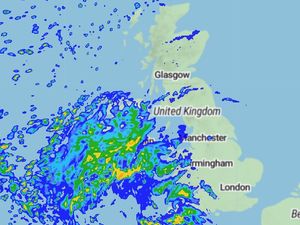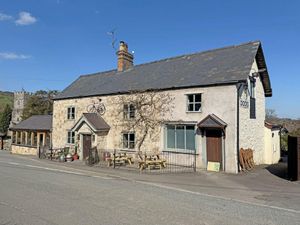Pictured: The night a Zeppelin came to Shrewsbury?
Could this very grainy image be the moment a Zeppelin passed over Shropshire on a deadly wartime raid?

The remarkable photo is said to depict the event in Shrewsbury, although it has to be treated with caution.
The Shropshire Star recalled the raid of January 31, 1916, on the 100-year anniversary. Several Midlands towns were hit in their first taste of aerial warfare.
Nine German Zeppelins were involved in a major attack which created shockwaves and indignation. Reports vary as to how many died. The figure given in the immediate aftermath was 59 dead, and 101 injured.
Although the target was Liverpool, the Zeppelins were so lost that that city escaped unscathed and it was the Black Country which was hardest hit. There were reports of an airship travelling over Shropshire.
This image was loaned to the Star some years ago by Mrs Burle Thorne, of Crowmere Road, Shrewsbury, who told us that it showed the Zeppelin over Copthorne.
She said at the time: "It belonged to my in-laws, Mr Arthur Field Thorne, and Gladys Mary Thorne, from Oswestry. My mother-in-law's cousin was stationed at Copthorne Barracks at the time and was an officer in the Veterinary Corps. I'm afraid I can't remember his name.
"He was there during the First World War and I believe he took the photograph. My in-laws at that time lived pretty well opposite Copthorne Barracks, at Copthorne Drive. Before my mother-in-law died she gave the photograph to my husband, John, the eldest son."
The picture was kept in an envelope on which John had written, based on information given by his mother, "German Zeppelin in the searchlights over Shrewsbury, approx 1916/1917".
If a Zeppelin had been caught by searchlights over Shrewsbury, there would probably be many more accounts of Salopians having seen it and it would become part of popular folklore. The reality may be that, flying high in the dark, it slid by unseen.
In any event, the wanderings of the Shropshire Zeppelin were charted in Great Western Railways records. It was first picked up by Great Western staff near Banbury, and carried on in an almost direct line to Birmingham, and then to Shrewsbury, which it reached at 10.10pm. It later flew over or near Welshpool, Craven Arms and Bridgnorth.




